GameB & ETHCommons
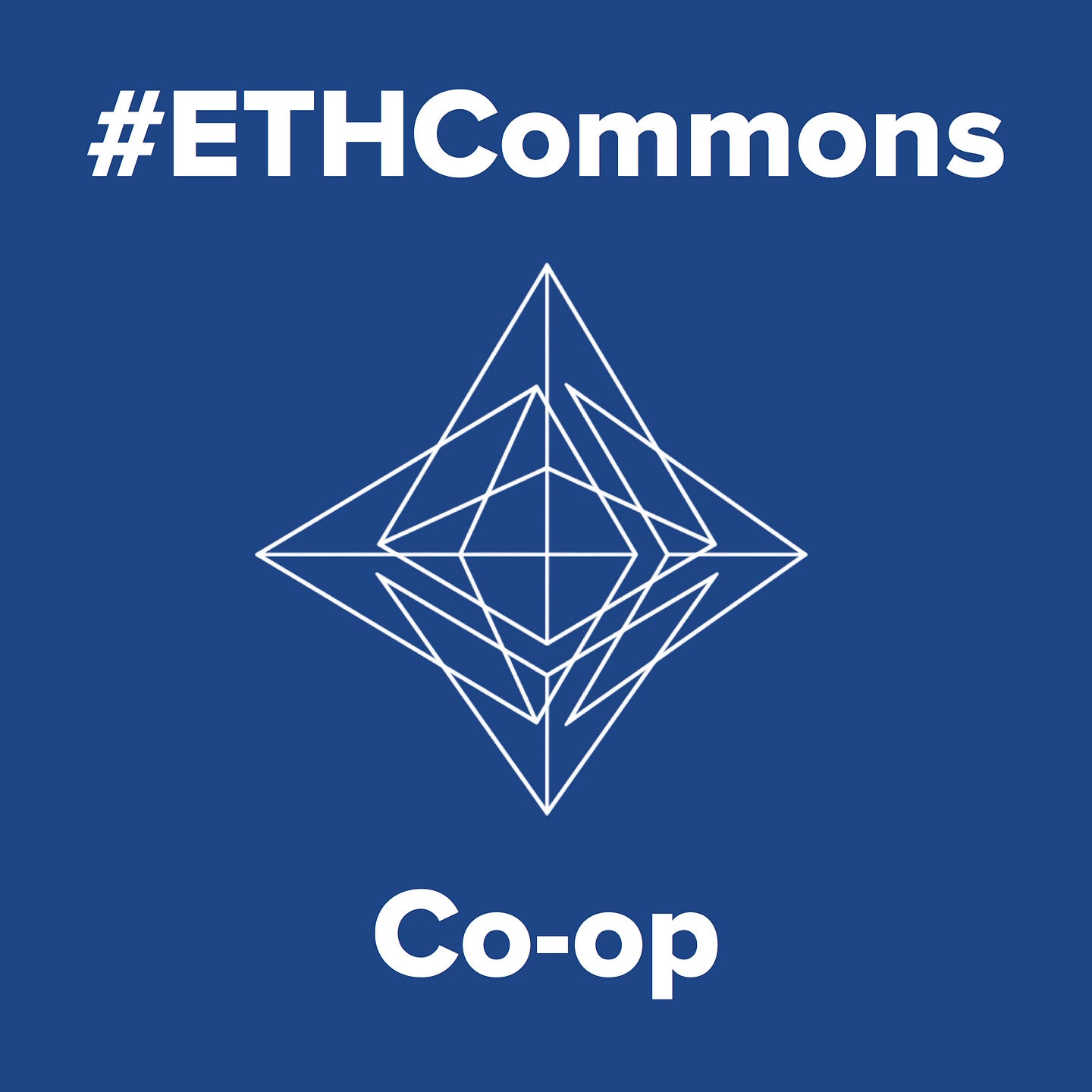
The goal of this article is to outline my upcoming crowdfunding experiment to be a Co-Steward of the Open-Source Ethereum Commons Co-op. Essentially: various people/projects will support me to facilitate cross-project collaboration. Why is that needed? We’ll get there by starting super abstract (with the macro system context), defining a future world we want our children to live in, and then seeing why the Ethereum Co-op is my experimental first step. Here’s that structure in bullets:
- Part 1, The Why: Transitioning Humanity to an Antifragile System that Internalizes Externalities
- Part 2, The What: A Tech<> Society System that Funds Public Infrastructure and Actively Shapes Ideology
- Part 3, The How: Bottom-up Crowdsourcing the Ethereum Co-op
Essentially, if you’re interested in shaping the macro Ethereum story, or in the question below, read on!
Part 1, The Why: Transitioning Humanity to an Antifragile System that Internalizes Externalities
Hmmm, k. So we (humanity) are in a very strange situation these days. On one end, things have never been better. Max Roser beautifully breaks this down in his quantitative historical analysis, The short history of global living conditions and why it matters that we know it. On any given metric of success, we’re doing much better now than we were 50, 100, or 200 years ago. Hooray!
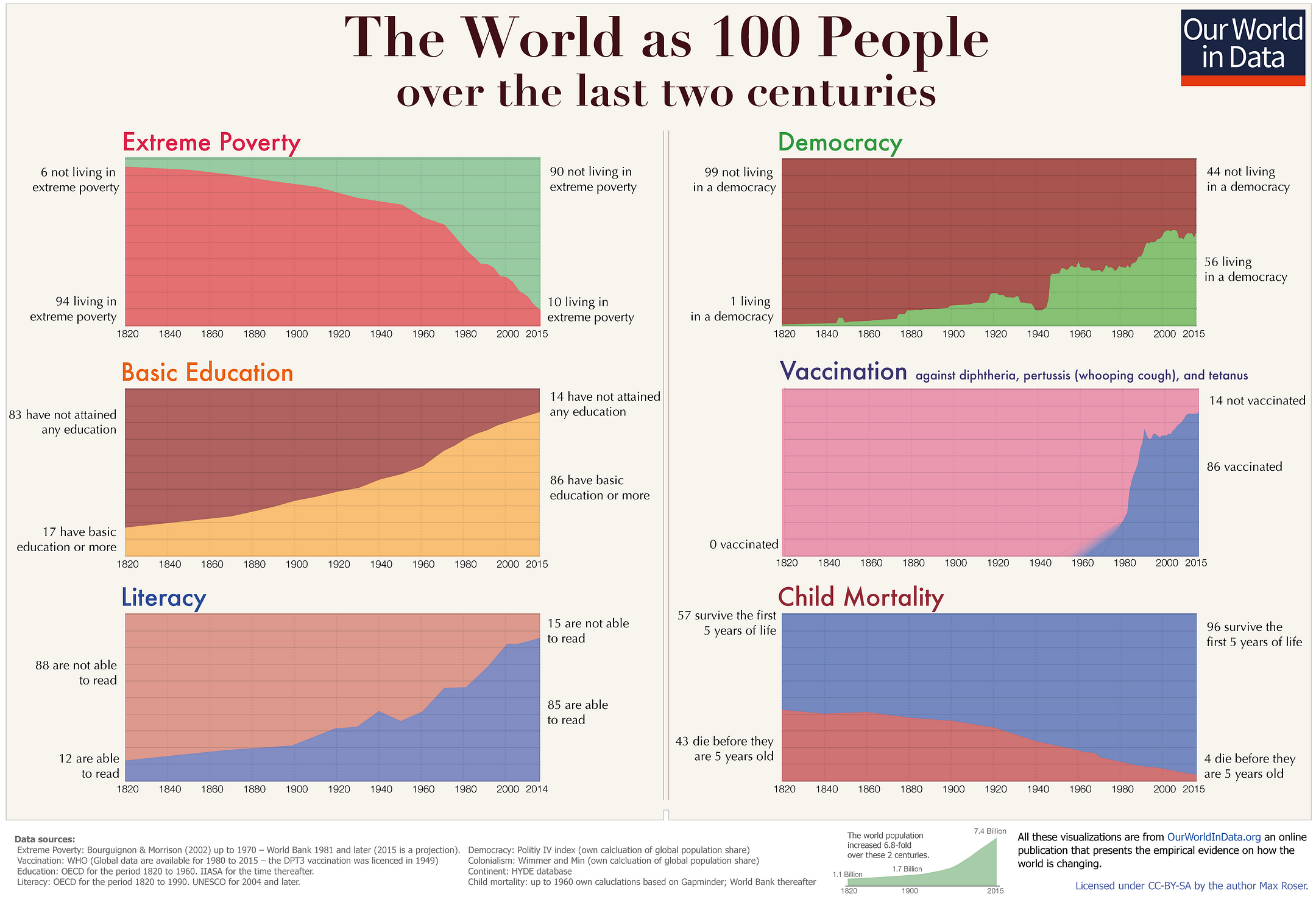
We’ve achieved this collective growth through primarily “non-benevolent” means. As Nassim Nicholas Taleb says in Antifragile:
Perhaps the idea behind capitalism is…: the system facilitates the conversion of selfish aims (or, to be correct, not necessarily benevolent ones) at the individual level into beneficial results for the collective.
However, I think that system won’t work for the 21st century (#LateStageCapitalism). This is because we’ve primarily achieved that growth through exponential technological progress that is capitalistically incentivized to ignore externalities. In other words, we’re heading towards a non-antifragile cliff. As WaitButWhy says:
The unfortunate thing is that the Human Colossus isn’t optimized to maximize the chances of a safe transition to the best possible Planet 4 for the most possible humans — it’s optimized to build Planet 4, in any way possible, asquickly as possible.”
This transition gets faster and faster as we become a hyper-networked organism. By 2020, 80% of the adults on earth will have a smartphone. This drastically increases individual rates of learning+value creation, while greatly expanding the number of people who can learn+contribute.
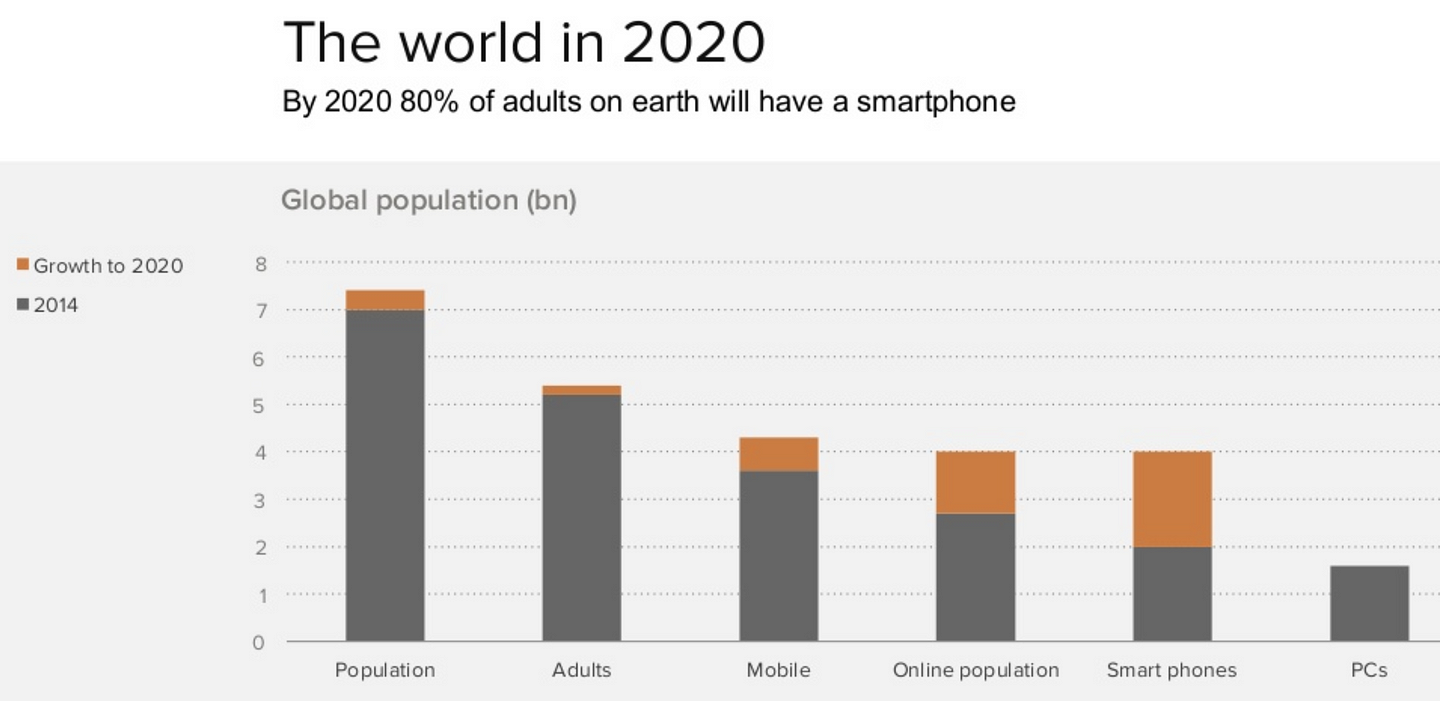
At a high-level, this trend is good. (Democratize all the things!) So what’s the issue? The negative externality is primarily at the highest system level: the Technology <> Society loop. This is my favorite way to think about our existence on Earth (and will show up later in this article). It’s the idea that technology affects the texture of society, which in turn affects the kinds of technology we build. It’s a reinforcing feedback loop, and it’s getting faster (I recommend watching the whole gif):
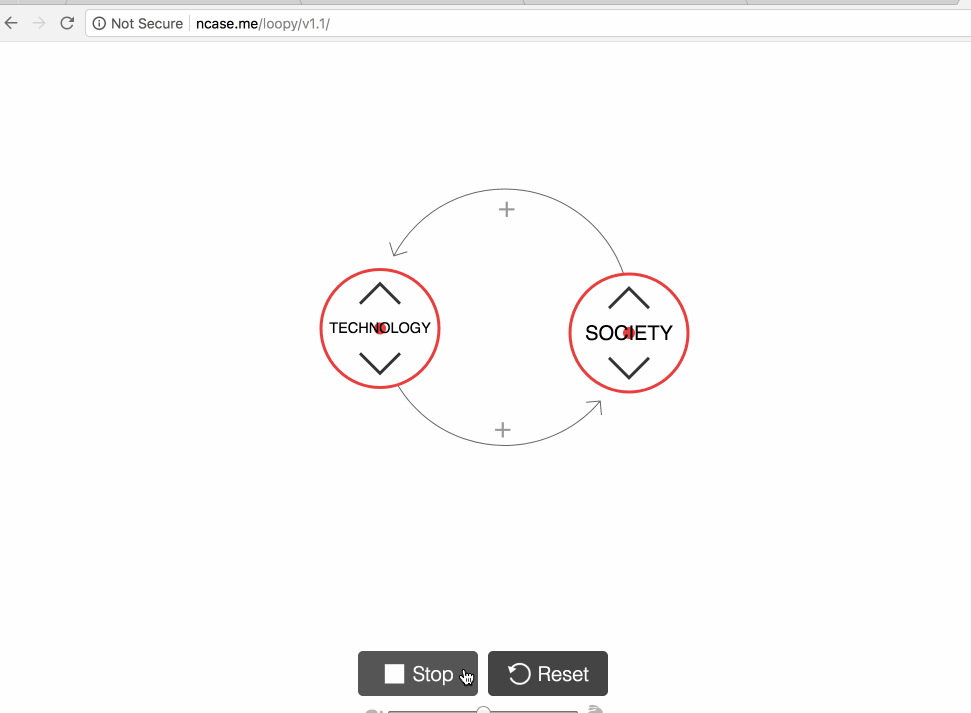
The system above doesn’t really necessitate fear/action. It’s just two abstract concepts that make each other increasingly more so. But personally I find the end a bit disconcerting, in a Pandora’s Box kind of way. Once we let exponential technology out of the bag, it’s tough to contain it. (Kind of like that scene where Flubber goes wild and Robin Williams’ robot assistant tells him, “I think you gave Flubber a little too much free will.”) 15sec clip
So we’re at this convergence of a bunch of Technology (AI, VR/AR, biotech, crypto, etc.) that will drastically change our Society. That wouldn’t be an issue, except that we may be neglecting the externalities of these technologies. Flubber is a fun example of technology and its negative externalities, specifically Creative Destruction Externalities. A Creative Destruction Externality is when we create some new technological innovation that changes/destroys the existing structures/systems. Joseph Schumpeter, who developed the concept, said: “This process of Creative Destruction is the essential fact about capitalism. It is what capitalism consists in and what every capitalist concern has got to live in.” In the scene above, we can see this Creative Destruction Externality. Robin says “it’s amazing, it’s miraculous” (the technological innovation is good!), but Flubber breaks lots of things and escapes, likely changing society (negative externality bad).
Let’s look at a specific, simplified example of a Creative Destruction Externality circa 2017. AI is automating tasks (good!), but will remove blue-collar jobs (short-term bad). Blockchain will disintermediate middlemen (good!), but will remove white-collar jobs (short-term bad).
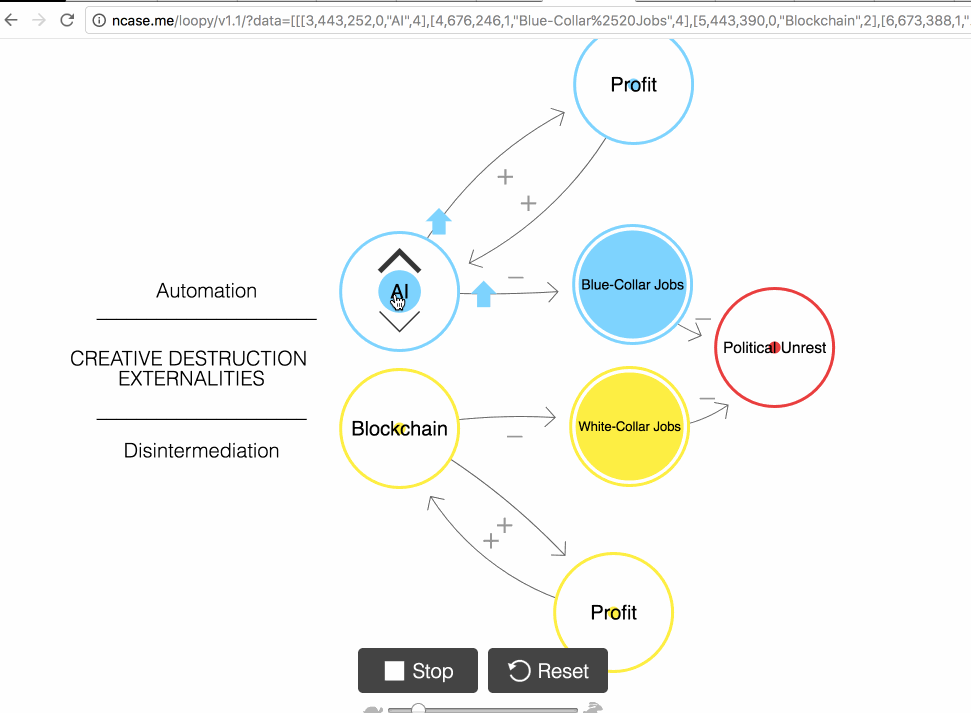
In the simplified system above, we can see the Political Unrest created as a result of job loss. However, we can add various balancing forces to counteract the instability brought on my technological change (i.e. to internalize the creative destruction externalities). The system below shows two: Education and UBI.
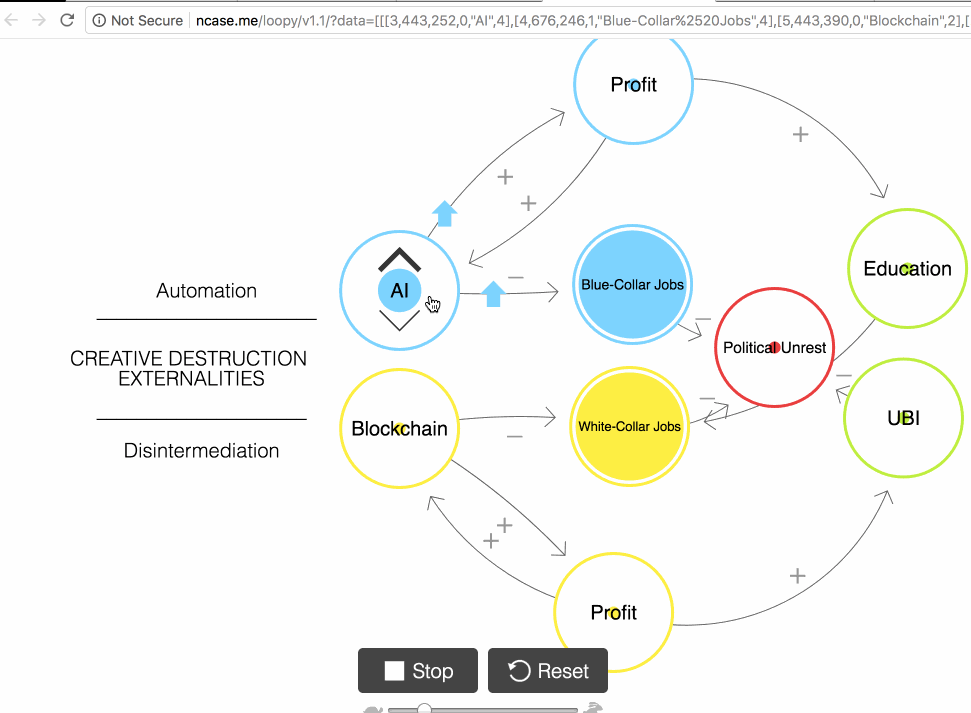
If we want a stable future in the face of increasing technological change (and resulting creative destruction externalities), we need to, as the brilliant Daniel Schmachtenberger says: internalize the externalities. And this “job loss → political unrest” externality is just one of many changes coming. (Others: Industrial Revolution → climate change. Aggregation Theory → centralization → no exit/voice. Blockchain-based decentralization of power → fragile power transition). So, what should our main goal be?
In the face of massive converging technological change, we need to create a new antifragile system that internalizes externalities.
Before I move onto part 2, I’ll stigmergetically leave some additional reading here.
- If you’re interested in more of this “new systems” work, Daniel is probably the furthest along in defining it. Check out his Civilization Emerging seriesand recent FutureThinkers podcast.
- For more on thinking about humanity through time, see Spiral Dynamics, World After Capital, and Sapiens/Homo Deus.
- For more on bad game theory structures, see SlateStarCodex’s Meditations on Moloch (plus my response). Or, to break them: Vitalik’s Superrationality and DAOs.
- For more on Thinking In Systems (generally), see Thinking In Systems. (Who would’ve thought?)
Part 2, The What: A Tech<> Society System that Funds Public Infrastructure and Actively Shapes Ideology
Ok, so we’re trying to create this sweet new Tech <> Society future where all this super fast technological change will result in a positive society, not a negative one. And to do that, we need to be super aware of externalities and try to internalize them. But how would we actually create that system, especially if we exist in a system that is primarily defined by its ability to externalize? How do we “exit” our current system to create another? We do this by:
- Funding public goods for the Technology side of this new future
- Actively shaping the Society side of the tech-society loop by telling stories, shaping ideology, building values, etc.
- Doing the above in a bottom-up way that leverages the 4B+ crowd for impact and speed.
How do we fund public goods in a bottom-up way?
Enter Ethereum.
There are many ways to unpack and understand Ethereum, Bitcoin, cryptocurrency, and blockchains, but I believe Vinay Gupta has the best explanation. He views Ethereum through the lens of “generative complexity” — “an analytical tool for analyzing the difference between systems that live and systems that stall.” (Taken from this highly recommended 10min video segment starting at 20:45.) Vinay accurately states that this idea is “quite slippery and hard to describe”, but the idea essentially is this: when we want to create new societal structures/institutions/systems (when we want to “exit”), we can’t just create the system itself, we also need to fund and co-create public infrastructure/public goods for the system itself.
This public good infrastructure (what Vinay calls meta-structures) are crucialto build the new system. We can’t just snap our fingers and create a new system. No, we need to co-evolve that new system with an infrastructure funding mechanism that enables the meta-structures for our new system to thrive.
Traditionally (within nation-state capitalism), this infrastructure funding mechanism has been “governments support the commons through a top-down taxation scheme”. Here’s what that looks like (with governments and corporations being the main actors):
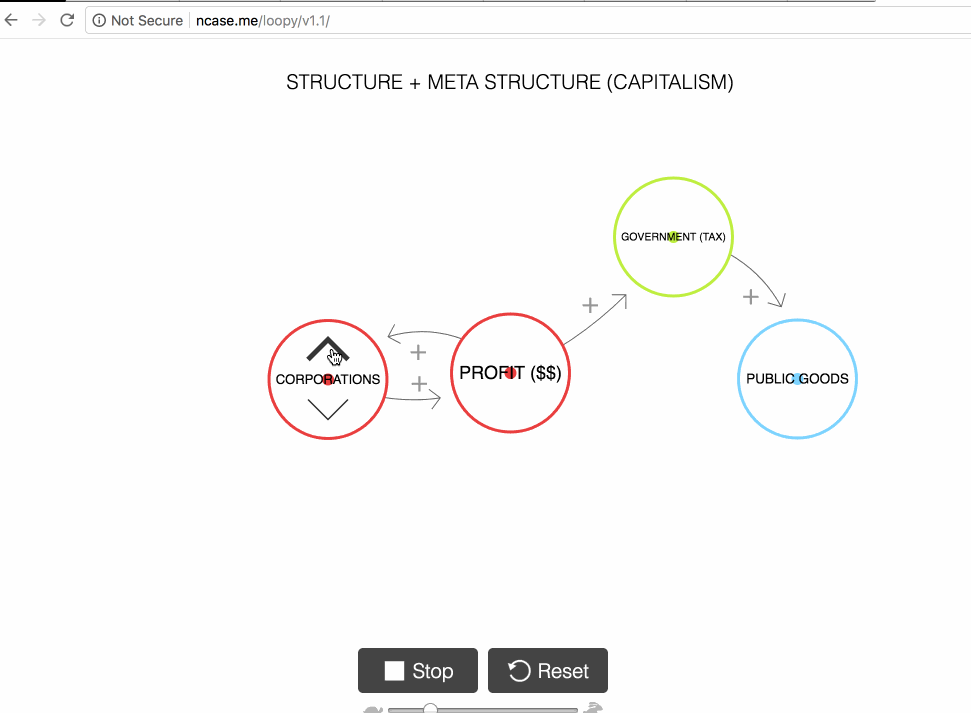
However, how should we fund public meta-structures in a bottom-up blockchain world? In fact, Ethereum is awesome for this. As Vinay says: “Ethereum is by far the best set of mechanisms for building meta-structures. It’s like a Swiss Army chainsaw for building meta-structures.” Why is this true? For a couple reasons:
- You can create (and self fund) arbitrary trustless meta-structures on Ethereum (through smart contracts). Essentially you can say “this public protocol/utility should exist, right?” And if the people agree, you can get funding to build it. (Through a token sale.)
- Then, creating a good meta-structures on Ethereum increases the utilization of ETH, increasing its demand/price, which can then be used to fund more meta-structures. (This is crucial. It is rarely the case that one gets monetizable value by providing for the commons. Usually it’s a selfless act. Here, that’s not required. Making great things for the Ethereum commons increases the price of your own ETH. A purely rational/selfish actor can make money off the common good.)
- With the above gains, we can formalize bottom-up self-tithing systems to fund more public meta-structures. (We don’t have these self-tithing systems yet, but need them. See the CryptoPledge at the bottom of this article.)
So, instead of the top-down taxation system described above, our Ethereum-based meta-structure funding mechanism looks self-imposed/bottom-up, with token sales as funding mechanisms for open-source. (Also see Vitalik’s recent note on “tax stickers”.)
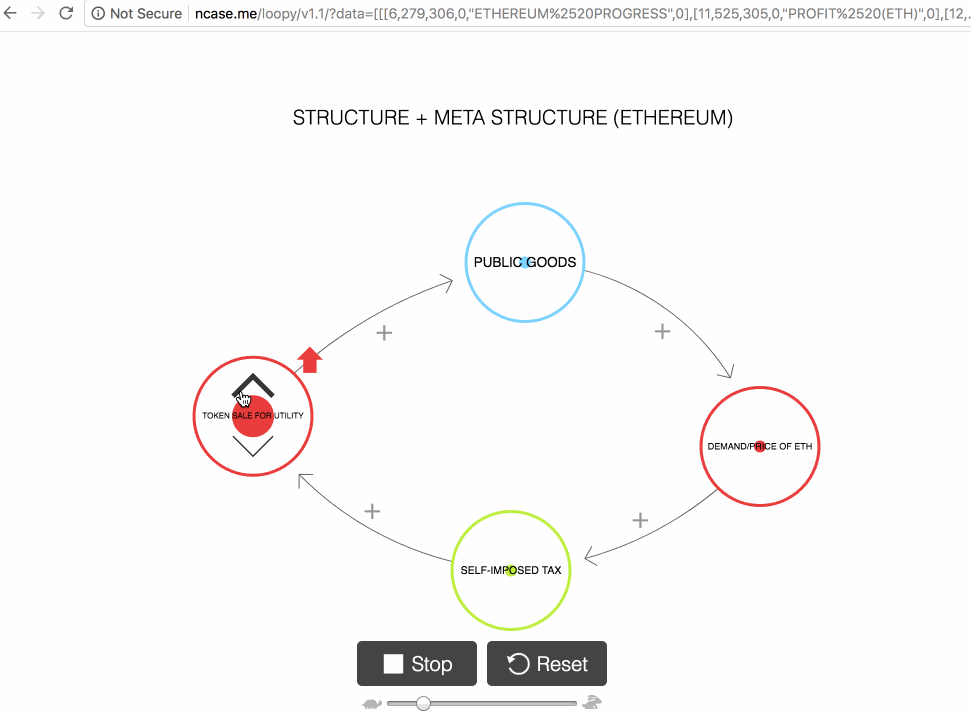
What Is Our Story of the Future?
I think a reasonable reaction to the self-imposed taxation above is—”Yeah right! Like people are going to do that. lol nice try.” And right now, given our current societal mindset, it’s pretty much true. That’s why there’s a 2nd necessary aspect to creating our new future system. It’s not enough that Ethereum is great at building meta-structures. We need to build out the rest of the story.
This is the Society side of the Technology <> Society loop (our favorite loop!). In order to create a new system, we need to build out thestory/society/ideology/values of the future (in addition to building out the infrastructure of it). This is essentially equal to the idea of Base and Superstructure (from Marxist Theory). This Base <> Superstructure system is the key reinforcing feedback loop that sustains capitalism (and why it’s so hard to break out of it!). The Base (capital, technology, etc.) shapes the Superstructure (ideology, society, etc.), which in turn maintains the Base.
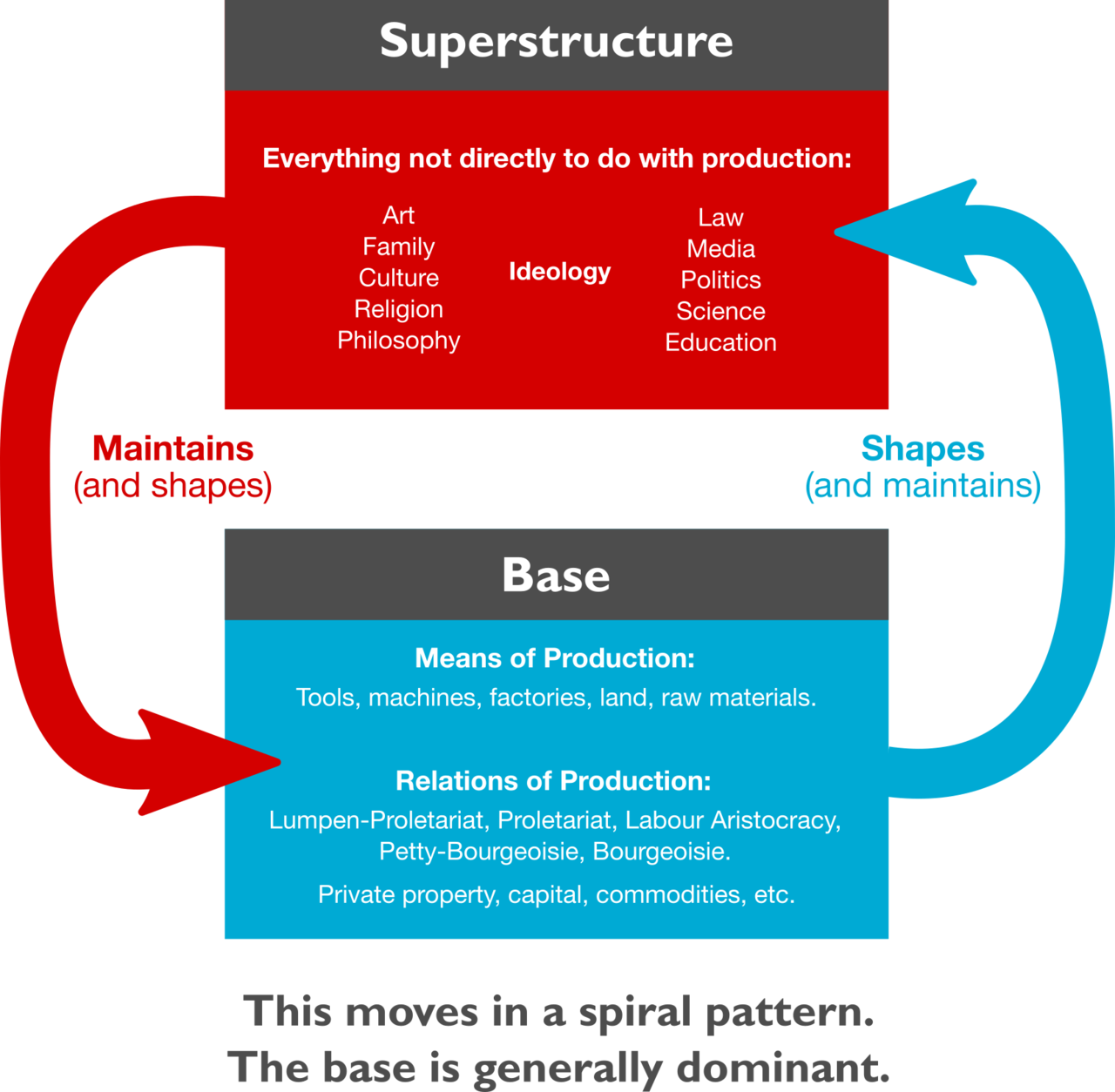
Which means that we could change our initial Tech <> Society loop to look a bit more Marxist (like this):
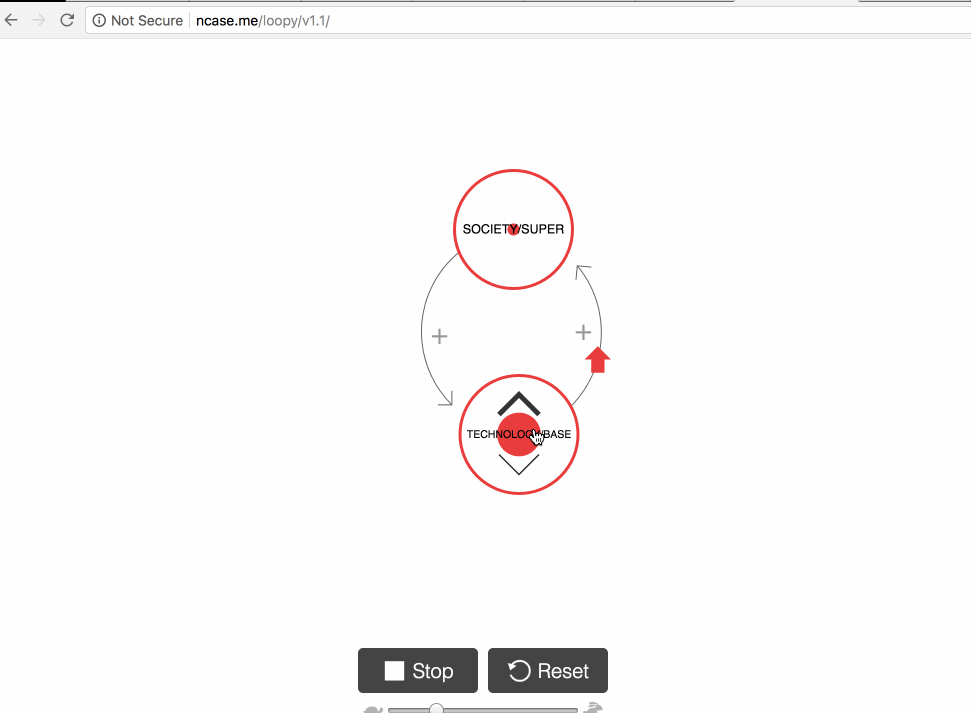
This story building (convincing the world to transition to a world of non-externalizing abundant commonism) is going to be tough. But necessary. As Vinay said in 2015: “What I’d like to do is build out the rest of the story so that, in 5 years, people frame Ethereum as something like Wikipedia, not something like Oracle.” The phrase “world computer” is a first step towards this story, but not nearly enough.
So, our overall system we’re trying to bootstrap looks like this:
- It’s a Technology <> Society loop (it’s a Base and Superstructure). All macro systems are.
- Within the Technology side, we can leverage a system like Ethereum to bottom-up fund public meta-structures.
- On the Society side, we need to co-create our new societal ideology.
Updating my statement from Part 1, it now looks like this:
In the face of massive converging technological change, we need to create a new antifragile [system, meta-structure funding mechanism, and societal ideology] that internalizes externalities.
Here’s some more reading around part 2:
- Evolution, Not Revolution. (On systems change.)
- Ben Thompson on another systems framing of this change (between Individuals, Tech, and Government).
- Focusing on Values in addition to Tech: Erik Brynjolfsson
- See Diego Espinosa’s articles on this shift: 1, 2
Part 3, The How: Bottom-up Crowdsourcing the Ethereum Co-op

Ok. So we kind of know what we’re trying to build. A new Tech <> Society loop that internalizes externalities, co-built with a meta-structure public funding mechanism and a special emphasis on the values we’re looking to create. How should we do this? Although there are lots of implementation details, the foundational idea is: create the new system by leveraging the crowd/building community in a bottom-up fashion. There are so many of us out there (4B+ smartphone users!). Let’s help and empower each other to make this happen. Let’s start by making an Ethereum Commons Co-op. I’ll give an overview of its: mission, values, and tactics. (Note that these are all rough drafts and are likely to change!)
MISSION of the Ethereum Commons Co-op
The mission of this co-op is mostly outlined above. It is: To create a new antifragile system that makes humanity better as we create converging exponential technological change. That mission is pretty much as macro as it gets. If I were to be more specific (on the 3–10 year time scale), I’d change the mission to be: To co-create Ethereum tech infrastructure AND valuesinfrastructure as the foundation for antifragile system creation. (Essentially, this mission statement describes Ethereum meta-structure creation + society/superstructure creation, while the first mission statement describes the abstracted Tech <> Society loop.)
This is what I mean by “commons” in the Ethereum Commons name. We’re actively thinking about the common good, about resources in the commons, and about breaking bad game theory problems (tragedy of the commons, arms races, etc.) that are the result of ignoring the commons. Let’s not ignore them anymore.
And by “co-op” I mean co-op in the traditional sense, where both ownership and governance are distributed. In our modern age, this co-op shifts into a platform co-op or a protocol co-op, where the thing which is being owned/governed is a platform or a protocol. The goal is not to have the 4B+ smartphone users be the object of some new system that they have no ownership/governance over. No, the new system should be reflective of a society where all can learn, create, and provide value. Where the system is created by those within it.
VALUES of the Ethereum Commons Co-op
#1: Decentralization
Defining the values of any shared group is difficult. One of the first obvious values that comes to mind is decentralization. But that’s a bit self-contradictory. By defining decentralization as a core value, we’re acknowledging that the values themselves may be decentralized (i.e. self-defined). So the shared values may be more like individuals self-defining their value set along given shared spectra, rather than as binary statements. (Here’s Vitalik on “The Meaning of Decentralization”.)
But why would we actually want decentralization as a value? This comes from a first principles mindset around our moral/political framework. Today, we’re not using this mindset and people politically self-identify into 2–5 groups. We define things like: “I’m a libertarian, you’re a conservative and our friend is socialist.” But there’s so much unnecessary societal tissue baked into those ideas. Those terms may have made sense 50, 200, 500 years ago. But today we have the ability to self-define in non-monolithic fashion. As Naval Ravikantstates in a recent interview with Shane Parrish:
I try not to have too much that I’ve pre-decided upon. I think that creating identities and labels locks you in and keeps you from seeing the truth. I used to identify as libertarian, but then I would have to find myself defending positions that I hadn’t really thought through just because they’re a part of libertarian canon. The reality is that, if all of your beliefs line up into neat little bundles, you should be highly suspicious because they’re prepackaged and put together. I don’t like to self-identify in almost any level anymore. That keeps me from having too many of these so-called stable beliefs.
So we can start to reject monolithic definitions of the past and self-define constructive gradients/spectra that we’re currently on. That is what I mean by decentralization.
Another great thing about decentralization as a value is that it aligns with Nassim Nicholas Taleb’s core ideas in his book, Antifragile. If we start to redefine ourselves along new moral/value gradients, the question becomes: what should those gradients be? Nick Liow gives a great overview on possible relationship-defined gradients here (another example here). However, I think Taleb gives the best system-defined gradients in Antifragile. The most important one is “Skin in the Game” (Taleb has a book specifically dedicated to this coming out Feb 27, 2018). The idea here is that, when one is making an action/decision that effects future outcomes (i.e. most things), that person should be connected to both the upside of that decision and the downside. The reverse of this, is, as Taleb says: “When he is right, he collects large benefits; when he is wrong, others pay the price.” This is a very powerful concept and is essentially equal to the idea above that we should Internalize Externalities. Internalizing the externalities of your actions is equal to having personal Skin in the Game (i.e. if the externalities of your actions have been internalized, then the negative ramifications of your actions will affect you, and you will have Skin in the Game). This is why, to me, Skin in the Game is one of the core building blocks of our new value set. AND this concept is aligned with decentralization. One way to think of Skin in the Game is “decentralizing future outcomes across the catalysts of those outcomes.” (Or as Taleb says: “True equality is equality in probability.”)
In addition to Taleb, I’m a big fan of decentralization as a value because it aligns with “where the puck is heading” in terms of both “Organizational Technology” and “Organizational Ideology”.
“Organizational Technology” are structures through which people can motivate and coordinate (taken from my podcast with Albert Wenger). Traditionally, we’ve had more centralized forms of Organizational Technology like Firms, States, etc. But now we’re seeing increasingly decentralized forms of Organizational Technology like Markets, Networks, (and now) Blockchains.
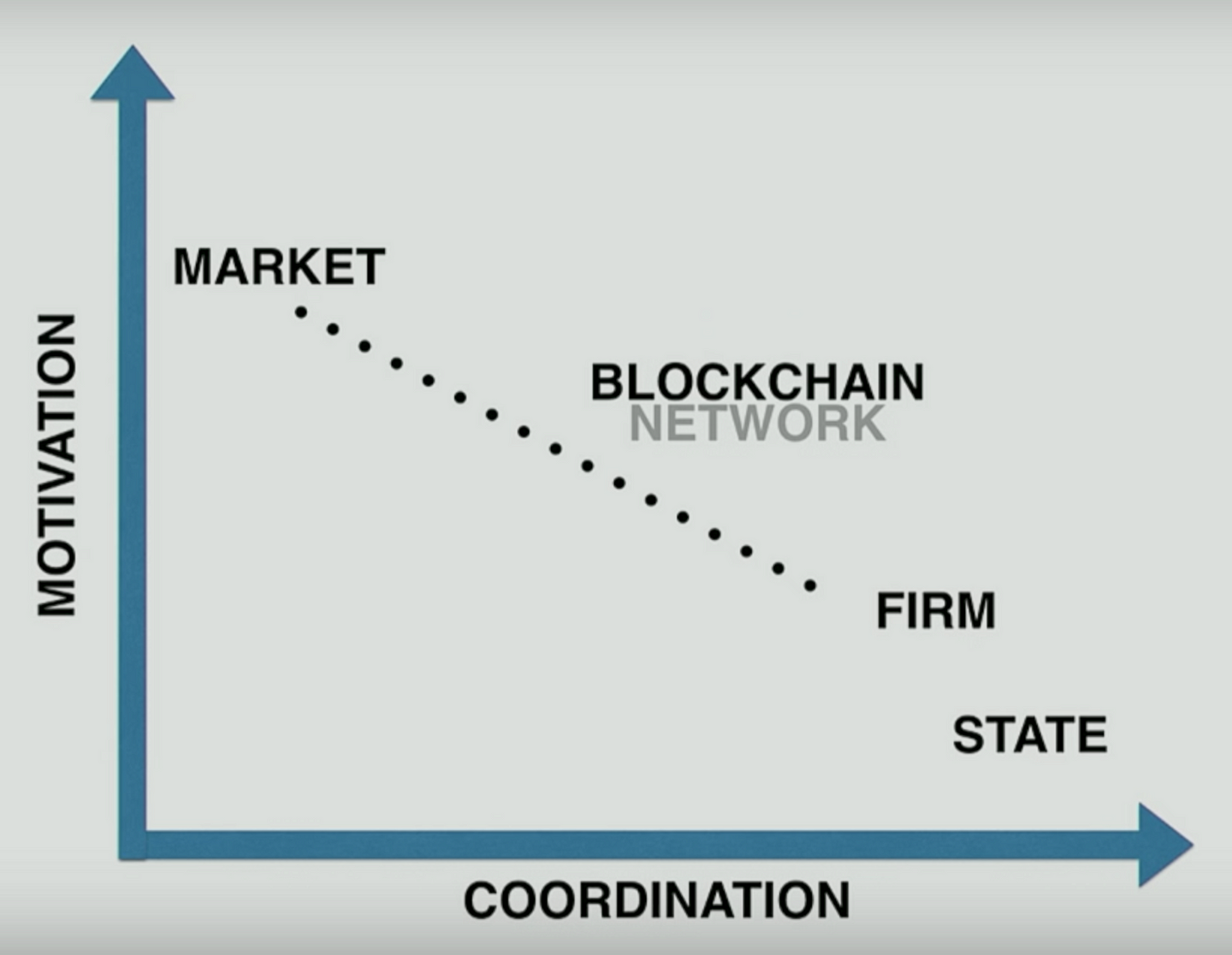
If Organizational Technology is the Tech side of the Tech <> Society loop, “Organizational Ideologies” are the Society side. Like Organizational Technology, Organizational Ideologies have changed over time. The future of Organizational Ideology is called “Teal”. The idea is that we think of ourselves as a relationship-based living organism, driven by bottom-up self-management. Like Blockchain, it’s quite aligned with decentralization as a value. See the top stage here:
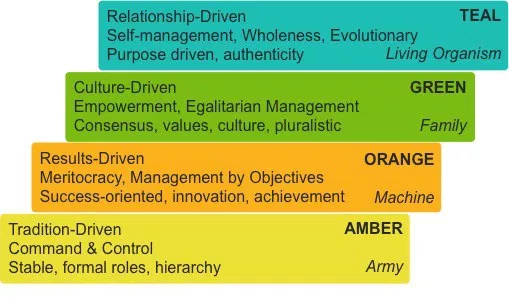
So, this is all to say that decentralization is likely a good value for the Ethereum Commons Co-op because:
- It self-referentially allows for debate
- It gives us a blank slate upon which we can redefine our values from a 1st principles perspective
- It is aligned with Skin in the Game and Internalizing Externalities
- It is aligned with the future of Organization Technology (Blockchain) and Organizational Ideology (Teal)
To learn more about bottom-up decentralization, check out Reinventing Organizations, Spiral Dynamics, Machine Platform Crowd, and Managing for Happiness. (Or check out the Organization Design section of my podcast/article on this.)
#2: Transparency
Given the (likely) non-binary nature of values within a bottom-up co-op, what is the next most important “value spectra” we need to self-define on? My instinct for the next “top value” is transparency. This is an often-stated value within the blockchain ecosystem, primarily as a response to the shadow qualities of blockchain: if we can be as secretive as we want, how secretive should we be? Like with decentralization, there are many sub-components of transparency that make it powerful. Let’s check them out!
Most obviously, transparency is necessary to be a platform co-op (you need to have transparency to know that ownership and governance are decentralized). This transparency occurs both at the actual mechanism level (how are things governed?) and at the information level (do members have the correct information to govern?). One can imagine transparency of governance mechanisms (i.e. we are using CarbonVote) without transparency of information needed to govern (i.e. it’s difficult to find the relevant information).
So, it’s clear that transparency of information is a gradient (and is a curation problem). This information curation problem is actually a example of both “a liquidity problem” and an “asymmetry problem”. More transparency leads to more liquidity (of information, capital, decision-making, etc.) and more symmetry (of outcomes, etc.). For a specific example, let’s look atpermissionlessness (which has more double ss’s than Mississippi!). In the long-term, it would be great to have a permissionless co-op: anyone can learn and anyone can contribute. Democratize all the things to create hyper-liquidity!But in practice, this is also a curation problem—what pull requests should be accepted? How do we determine who gets to speak in “important conversations”? These questions are difficult to answer, but in general, we should be striving for permissionless (and should be transparent around when and why we’re permissioned).
An additional concept resulting from transparency is cultural—the best organizations are those that have the most trust (and transparency is key to creating trust). We can create an abundance of trust by either leveraging Technological Protocols that don’t require trust (blockchain-based trustlessness) OR by creating Societal Protocols that make us trust each other more (through transparency). In other words:
- Tech : Society ::
- Trustlessness : Trust ::
- Transparent Blockchain : Transparency as Value
In fact, we’re actually creating a specific kind of trust, namely “vulnerability-based trust”. This kind of trust is created by leaders being vulnerable/transparent about their weaknesses, which shows the organization that weaknesses are something to grow through rather than be hidden from. The most powerful organizations build trust through honest/frank/vulnerable/transparent communication.
So, transparency is a powerful value because it:
- Addresses the privacy “shadow quality” of blockchain
- Is necessary for decentralized ownership/governance in a co-op
- Pushes for democratization/liquidity by elevating curation problems like permissionlessness
- Emphasizes vulnerability-based trust for long-term growth
To learn more:
- About a trust culture, see: An Everyone Culture, 5 Dysfunctions of a Team, Nonviolent Communication, Radical Candor, or the Team Communication section in my podcast/article on this.
- About trust on a more macro view, see: Alex Danco’s 4-part series on the abstraction of trust.
- About cryptoeconomic primitives for curation, see: Simon de la Rouviere’s Curation Markets or Mike Goldin’s Token-Curated Registries
Finally, let’s look at a specific example of decentralization + transparency. I have these two “pledges to decentralize power” (decentralization) that I post on my Patreon/Twitter (transparency). These pledges are 1) I give 50% of my income after $45,000/year (where more income doesn’t increase my happiness) and 2) I interview at least 33% women on my podcast (and follow at least 33% women). But each of these pledges are on a gradient (gradient as decentralization). If you want to give more/less of your money or optimize for other kinds of diversity, that’s likely all good.
#3: No Others?
To be honest, I’m not sure if there should be other “core values” of the Ethereum Commons Co-op. These two values encompass many of the key concepts.
TACTICS/METRICS of the Ethereum Commons Co-op
So now we’re (finally?) into the actual “how” of this. I like to imagine these as “experiments in the commons” based on the underlying intuition that: “if we want to beat bad game theory problems like tragedy of the commons, we need to have people in the commons”. I’m not sure about the perfect way to bucket these experiments, but I believe they breaks into the three categories from above:
- High-Level Tech<>Society System Design
- Meta-Structure Creation
- Storytelling
For now, I’m going to mostly ignore Storytelling-specific actions because: a) I do that on my podcast, Creating a Humanist Blockchain Future and b) Purely by funding/exploring ETHCommons, we’re telling a story about the future here. For the other two, my primary goal is to provide a Schelling Point-like structure where anyone that wants to learn/contribute can do so in a shared space—i.e. trying to create an environment that empowers and enables the crowd. Many of these shared spaces already exist. Things like: Twitter, Medium, and Messaging (Gitter, Slack, RocketChat, Riot). But there don’t seem to be many common spaces for things like backlog/project management (Trello, Asana), file management (Google Docs/Google Drive Folders), or in-time learning (group calls).
There are lots of options for KPIs here. Long-term they are things like: SDGs met, # of people w/ UBI, amount of money going towards public goods, etc. For now though, my initial instinct is to stay within our locus of control and make the KPIs: # of people in cross-project collaborations + # of people in the ETHCommons Co-op. With that in mind, here are my primary initiatives (each with a call to action):
- Maintain an Ethereum Commons Resource Doc that contains all cross-project/commons initiatives. Please add to it!
- Maintain an ETHCommons Trello Backlog that makes funding public infrastructure more liquid. Preethi Kasireddy’s Fundamental Challenges with Public Blockchains is a good start. This is the first step towards Trent McConaghy’s Civilization Map towards Self-Actualization. Right now it just has voting, but later we’ll use bounties (through something like Gitcoin) and long-term funding (through StakeTree/GivethDACs/OpenCollective). Please add to the Trello or vote!
- Expand membership in the Ethereum Commons Co-op. We’re especially interested in individuals who feel “isolated” in the ecosystem :). We already have some excited folks and are trying to keep it small at the beginning, so if you’re an interested project or individual, please apply here!
- Help project leads on existing cross-project collaboration (Radar Relay/0x w/ WETH, Santiment w/ Project Transparency, Aragon w/ RocketChat migration). If you lead another cross-project collaboration, reach out! (rhyslindmark [at] gmail [dot] com)
- Facilitate cross-project collaboration around Cryptoeconomic Primitives, Governance, SystemDesign, Diversity, and GeoCommunity (conferences + meetups). I’m going to be hosting “circle” calls on these topics. If you’re interested in learning more or becoming involved, join the Cryptoeconomic Primitives Gitter, the Governance Gitter, or the ETHCommons Gitter (for SystemDesign, Diversity, and GeoCommunity).
- Explore the overlap between Effective Altruism + Blockchain. 1) Research to see if “positively shaping crypto/blockchain” should be a cause area. 2) Advising the creation of a “CryptoPledge”, which is a self-tithing pledge for crypto individuals/businesses to give back to the system (see Giving What We Can, Founders Pledge, and Pledge 1%). I’ll say more at the beginning of January on where I’m giving my money (but you can imagine it as funding the ETHCommonsBacklog). If you’re interested in this overlap, join this EA Facebook group!
Additional Notes:
How can I support this project? (How am I being paid?)
I am being paid “by the crowd” through my StakeTree (which is like a Patreon for ETH). Although I like how many large companies have funded open-source software, I explicitly want to be funded by the community commons.I’m committing to work 10 hours/week at $50/hour for an 8-week pilot (running through ETHDenver—Feb 18). If you would like to support this work, please do so through my StakeTree! If you do, please email me (rhyslindmark [at] gmail [dot] com) so I know who you are. Note: Any “extra” money (from ETH appreciation or over subscription) will go to ETHCommons funding. (This is a variant on the CryptoPledge.) The projects below have already supported me in this.

Or, if you’d just like to stay updated, follow me on Twitter or subscribe to updates here:
Other Related Work That I’m Doing:
- Co-organizing ETHDenver Hackathon + Workshops, Feb 16–18. We expect this to be the “next ETHWaterloo” (thanks to Liam, Mark, Ameer, and the rest of their team for all the help!). In addition to awesome workshops like cryptoeconomic primitives and bonding/staking, we’re going to experiment by having other kinds of “making/contributing to the Ethereum ecosystem”, like research, UX, etc. And we’re committing to the decentralization of the ETH ecosystem by pushing for diverse attendees.
- Creating a Humanist Blockchain Future, my philosophical systems interview podcast (with pledges/memes to decentralize power).
Other Random Notes:
- On naming: I’m not sure exactly what my “title” should be here. Founder doesn’t seem right. It’s too hierarchical, it ignores all the people I’m standing on the shoulders of, and it goes against the idea of leveraging the crowd. So, right now, I’m trying “co-steward”. (Another thing I’ve played with is “Meta Community Manager”.) In general, I really like pushing “co” as a prefix. Here’s a funny longer title (that I kind of love): Co-Evolving as a Co-Steward of the Open-Source Ethereum Commons Co-Op
- On overlap with other similar initiatives: There are a couple similar models to this one. Something like ConsenSys is relatively similar (co-ownership across hub + spokes), as are many other crypto VC firms/funds (CoinFund, Cofound.it, etc.). The Web3 Foundation is maybe my favorite and most aligned version of this. In general, I try to think about these related entities the way I “want” all of us to think: as forked groups co-evolving towards a shared outcome. i.e. I’d love for the groups above to succeed. I’d love to share knowledge with them. I’d love to collaborate with them to understand where we align and don’t.
- On scoping to Ethereum: I’m scoped to Ethereum primarily because it’s the first smart contract platform that enables meta-structures (and has a large network effect). But I’d love to co-evolve with something like BlockstackCommons, and eventually see this turning into BlockchainCommons and then GlobalCommons. Essentially, I agree with Zooko’s comment on why he’s advising Tez0s, even if they compete with Zcash: “The network is bigger than any particular cryptocurrency — the network is all cryptocurrencies. In fact, the network is much bigger than that — the network is all of the scientific and economic activity of all of this planet’s people.”
- Legal technicalities on the phrase “Ethereum Commons Co-op”: The goal here is to make sure I’m trying my best to comply with legal requirements around this work. Here is what I know (as of 12/13/17). This project is not sponsored by The Ethereum Foundation in any way. As far as I can tell, using a modified Ethereum logo (the logo flipped 90 degrees super-imposed on itself) is compliant with the Creative Commons attribution 3.0 license (guidelines here). And, as far as I can tell, using “ETH” (like ETHGasStation, ETHWaterloo, etc.) or “Ethereum” (like This Week in Ethereum, Ethereum Denver, etc.) is ok, but I’m checking with Ethereum Foundation folks, just in case. Also, this “co-op” is not technically a co-op yet. (In fact, it’s just me!) Over time, we’ll see if it makes sense to turn it into a co-op, B Corp, non-profit, etc. UPDATE (12/22/17): I have checked with the Ethereum Foundation around this. I’m adding the following language: The #ETHCommons Logo is a derivative work from the original Ethereum logo. This logo is also licensed under a Creative Commons Attribution-ShareAlike 4.0 International License. (Original is 3.0, ETHCommons is 4.0.)
- On tokenization and investing in this project: You can’t invest in ETHCommons Co-op in the traditional sense (there are no shares). Right now, the only way to “invest” in this work is by buying ETH and hoping it will appreciate as a result of this work (see above: Ethereum as a “swiss army knife for building meta-structures”). In the future, we may experiment with ETHCommonsCoin, likely for governance. We also may experiment specifically with RhysCoin (again). And super long term, I’d love to have Skin in the Game/Internalizing Externalies with some sort of AntifragileHappySystemCoin.
- On shadow qualities, and what I’m missing: By being hyper focused on ETHCommons work, I’m definitely missing lots of perspectives/ideas here. The key one for me is that I don’t reference many females. I reference Taleb, Schmachtenberger, Marx, Buterin, Gupta. I need to work more to incorporate Julia Galef, pia mancini, Zeynep Tufekci, Preethi Kasireddy. (Initial thought: in 2018, I need to read more books by women!)
If you have any questions/comments, please email me at rhyslindmark [at] gmail [dot] com. I love constructive/critical/brutal feedback :)
Thanks!